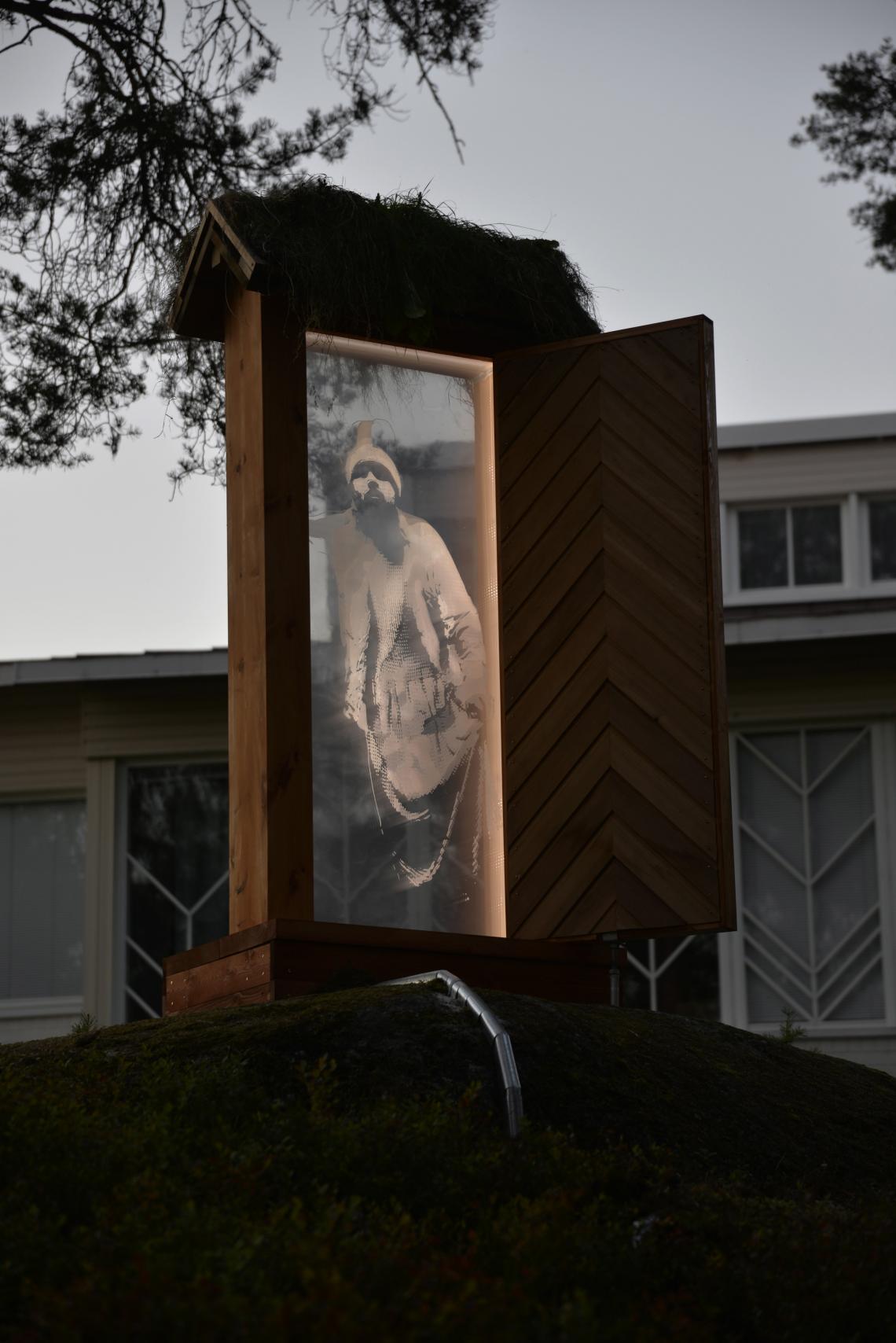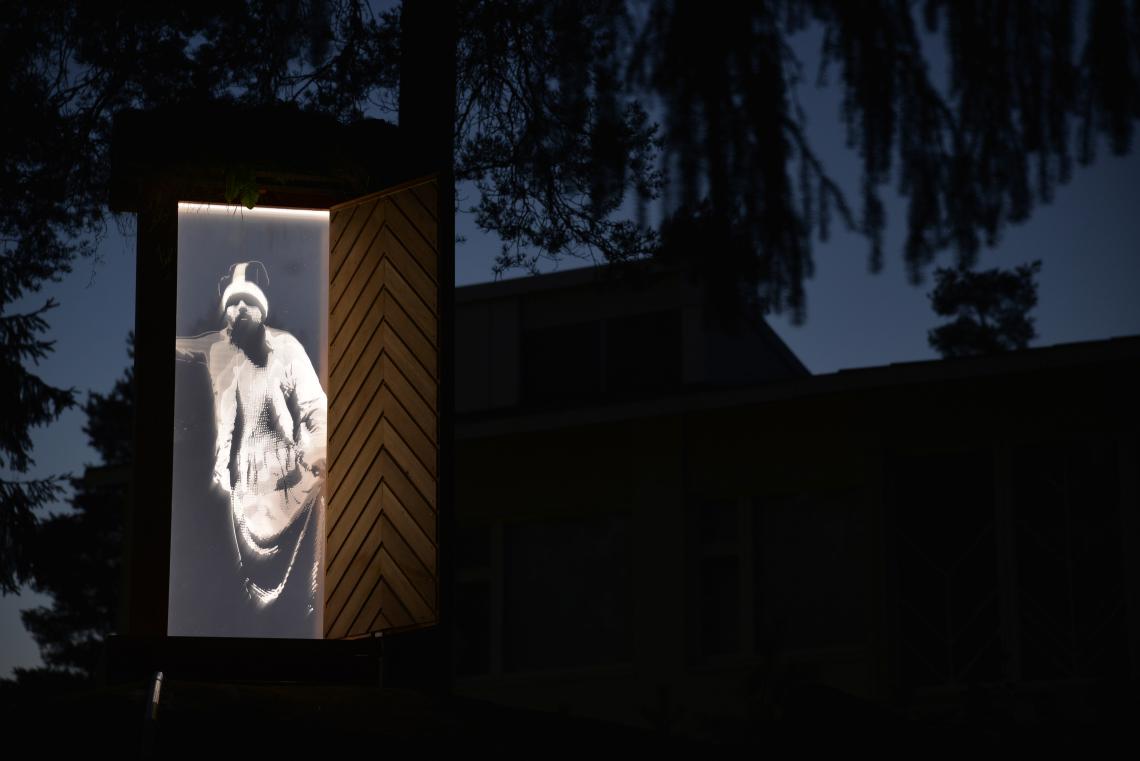
New fate of the Village Fool
In Runohenki, meaning literally, the ‘Spirit of the Poem’, artist Jouna Karsi portrays the story of Viina-Matti, “Booze-Matti”, a self-educated poet and bard who lived in Haapavesi and who was considered to be the village fool, even though he was in fact a very deep thinker. His erudite observations were often brazenly honest, causing upset to the townspeople who had something to hide, whilst his unusual appearance, as he wore lace dresses and a tea cosey for a hat, gained him a lot of negative attention. As a result of the controversies he unearthed and his eccentric ways, Viina-Matti was persecuted by the people of Haapavesi, who he blamed for burning his house down. Subsequently he moved into a small hut in the forest and lived a relatively isolated existence.
Karsi’s work uses light and special printing technology to create a three-dimensional image of Viina-Matti on his doorstep as he steps out from his hut. The work is placed in some wooded land near to the local secondary school, thereby creating a reflection of knowledge and learning, as students of the school will pass this learned but ostracized figure daily. It aims above all at fostering a sense of tolerance towards marginalized people and communities.
In his general practice Karsi plays with scenes of traditional landscapes and townscapes often incorporating wooded areas and rocky terrains. In the works he plays with scale, making small industrial cityscapes or rural areas, or sometimes combining the two. These miniature worlds, incorporating borders, fences and sometimes mazes invite the viewer to take a closer look before realizing that something in the layout or scale of the works is impossible: stairs and roads lead to nowhere, mirrors repeat a small section of suburbia onto infinity, and so on. This element of surprise or trickery is reflected in Runohenki, as Karsi plays on the seeming deception played by the maverick figure of the fool, which is also a deception played in society by the figure of the artist. Additionally, the work is made so that the figure of Viina-Matti comes in and out of view depending on light conditions and the vantage point of the viewer. In this sense a further kind of trickery is performed by the artist, using scientific methods.
From stories of crazy Buddhist monks in the Far East, to the court Jester’s who entertained nobility and befriended kings, the figure of the fool who bears a message of wisdom under their unintelligent facade is common across the world and throughout history. The image of the Jester appears in Tarot and popular playing cards as a figure who, whilst being considered to be crazy or stupid, has the capacity to change the direction of a game, or of someone’s fate.


